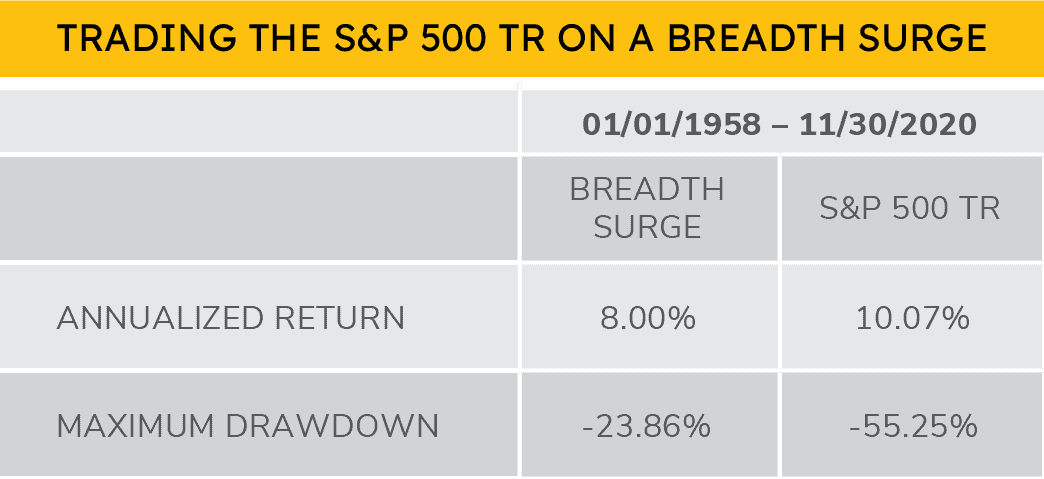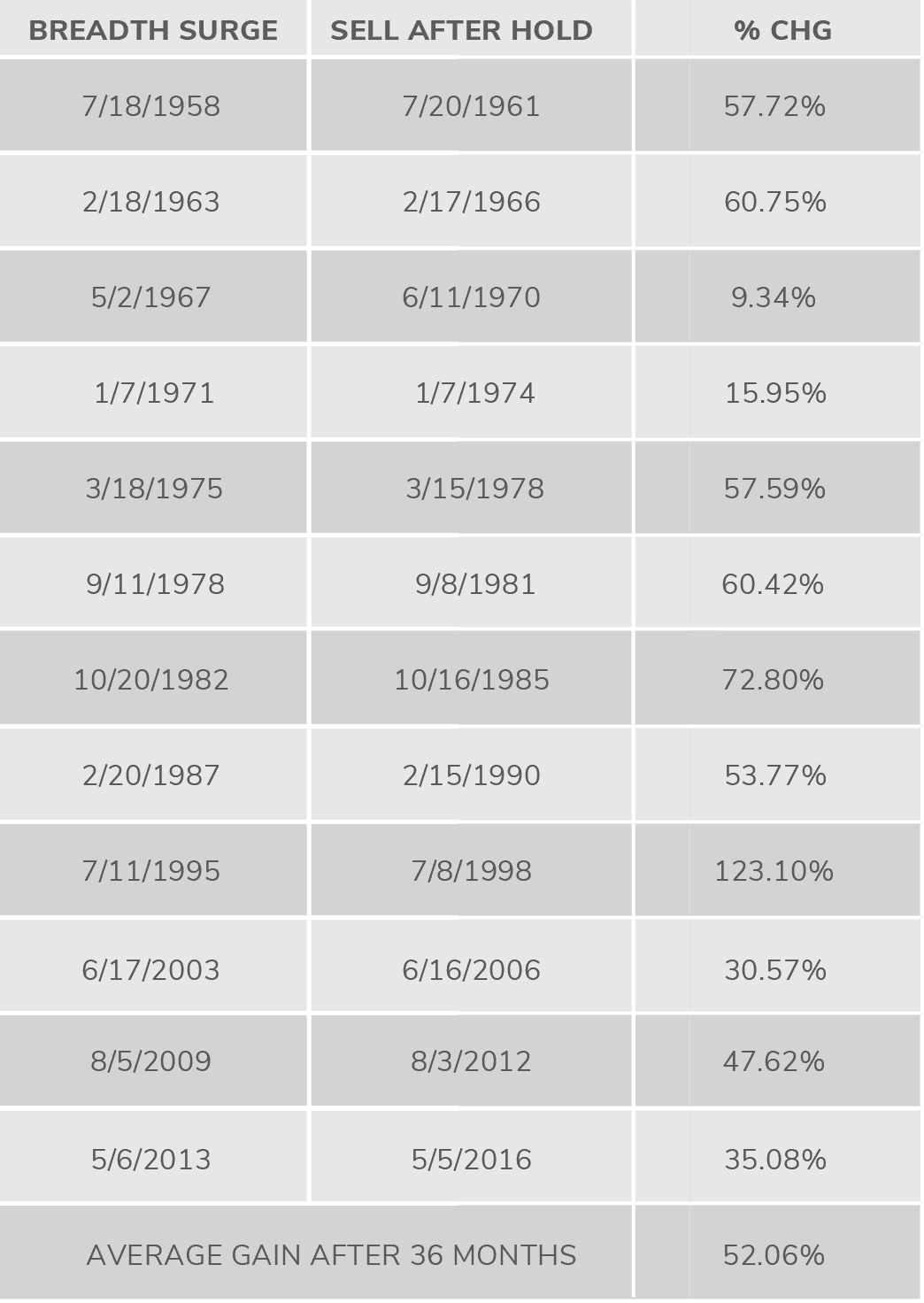
In a recent blog we discussed the perfect record of a breadth thrust in relation to subsequent market gains.
Our definition of a breadth thrust is:
…when you have an extreme number of stocks advancing, rather than declining over a short period of time. While we have seen many variations of this this indicator, we define a breadth thrust two ways;
- The ratio of advancing stocks to declining stocks on the NYSE rising is 2.0 or greater over a 10-day period.
OR
- The ratio of advancing to declining stocks exceeds 2.5 over a 5-day period.
It’s no secret that our favorite way to measure breadth is via the NYSE Advance Decline Line.
But is there another way to measure market breadth?
Given that breadth is nothing more than the overall participation of stocks, during a market move, there are many ways to capture this trend.
A simple way to measure market participation is by looking at the percentage of stocks that are over their respective moving averages. The industry standard for moving averages has typically been the 50- or 200-day variations.
The time frame is subjective, but to keep things simple let’s focus on the industry standard of a 200 day moving average and look at the percentage of stocks that are above their 200 day MA on a daily basis.
When this number is elevated it shows broad participation and when extremely high is referred to as a breadth surge.
Breadth Surge
A breadth surge is when you have an extreme number of stocks trading above their long-term moving average, which can be defined as over 80%-90%.
In theory, this is often a turning point in the market as the sellers have run out of things to sell and buyers are frantically buying stocks.
Since there is no definition of when to sell, this is more of a market background system where you would want to test the market performance following this type of signal.
Testing the Theory
Our trading motto when it comes to interesting market data points is “don’t talk about it, be about it”.
The best way to test any “theory” is to transform it into a trading system.
Using the S&P 500 TR as our security (you can’t trade an index; this is for illustrative purposes only) the trading system is straightforward:
- BUY the S&P 500 TR when 90% of stocks in the S&P 500 are over their 200-day MA.
- SELL the S&P 500 TR after holding for 36 months.
- When in cash, the money is invested in a 3-month T-bill.
If you used the basic system listed above, how would you fare relative to the S&P 500 TR?

As you can see, this simple trading system would get you 80% of the market upside while limiting your downside losses to less than 50% of the market. Not bad!
However, adherence to this type of system would be poor as the impatience of sitting in cash would take control.
Another way to look at this data is to use it as a “turning point” trigger in market action. Therefore, its best analyzed in a “hold expiration” lens.
In this case lets simply look at the performance of the S&P 500 TR, 36 months after a breadth surge is generated.

Since 1958 there have been twelve instances of a breadth surge that was able to complete the 36-month hold.
The results have been impressive as the market has been higher 100% of the time and, in most cases, had strong double-digit gains with the average return being approximately 52.06%.
There was also the unbelievable 36 months stretch that saw the market up 123.10% from 1995-1998.
It doesn’t come without risk, as you would’ve sat though the 1987 bear market but still finished positive over the 36-month hold.
We recently had a breadth surge on 11/25/2020. Will the impressive track record of a breadth surge continue?

Let’s unpack all this data:
-
A breadth surge can be a viable and successful trading system, but adherence would likely be poor given the amount of time spent in cash.
- The returns after a breadth surge are incredible and with a 100% success rate of positive forward-looking returns since 1958.
For full disclosure, this is simply to illustrate a point. This is not financial advice and these numbers do not reflect trading costs, taxes, fees, or anything else that is important.
Final Thoughts
Our money management process is designed to take the emotion out of investing. Trading based on your gut or news headlines is a surefire way to fail. We believe it’s best to use sound trading systems backed by empirical data.
However, relying on one trading tool is like trying to play golf with only one club, while it can absolutely be done, it’s not ideal. If you want to actively trade to manage risk, you need to be able to use a wide variety of indicators.
Happy Investing…
Disclosure: This information is prepared for general information only and should not be considered as individual investment advice nor as a solicitation to buy or offer to sell any securities. This material does not constitute any representation as to the suitability or appropriateness of any investment advisory program or security. Please visit our FULL DISCLOSURE page.
